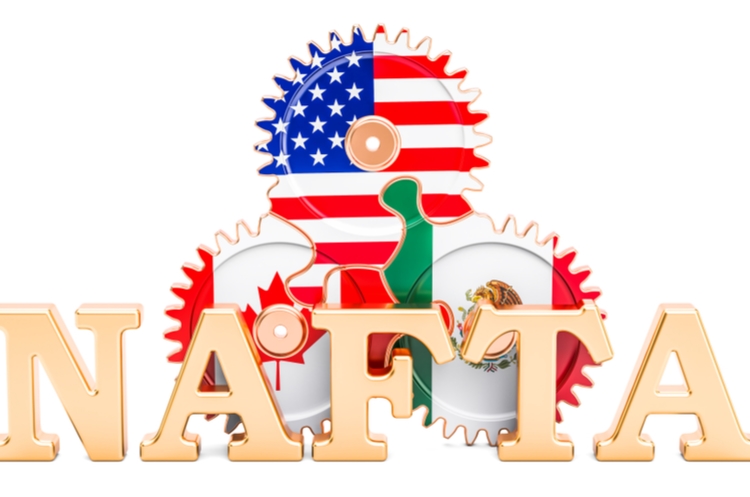Trump & Trade – Fear (with apologies to Bob Woodward)

In my last blog, I predicted much bluster and threat to try to get a deal before the mid-term elections – but no tariffs. The bluster and threat are a permanent feature of the Trump administration and so easy to predict. I was wrong on tariffs, and I was wrong about the Canadian response. There has been no action to have the U.S. tariffs on aluminum and steel declared illegal under NAFTA. However, there has been a package of Canadian tariffs that target American steel and aluminum as well as other goods relevant to Mr. Trump’s supporters. This targeted response echoes that of the European Union and perhaps this was considered more measured. There has also been a request by Canada for a review of the Trump administration’s decision to impose tariffs on Chinese solar panels under chapter 20 of NAFTA. Interesting positioning for Canada. Perhaps the signal is to China that Canada would be a good, predictable and law-abiding trading partner that cares about the entire WTO framework.
I would like to highlight two points about the talks over the summer:
- In June, Canada made an offer to accept the renegotiated NAFTA deal with the U.S. position on automotive production from high wage plants, but without further changes. This offer was apparently made without consulting Mexico, but realizing that the then U.S. position on automotive production was an important and difficult point for Mexico.
- Following that, Mexico and the United States entered into bilateral negotiations and agreed to a deal that includes all of the U.S.’s points – other than some moderation of the U.S. position on high wage plant production. Basically, this deal preserves the automotive jobs Mexico currently has, but reduces the likelihood that there will be more.
There has been a lot of talk about Mexico “throwing Canada under the bus.” It could be argued that Canada shoved first, but unsuccessfully. All is fair in love, war and international trade.
It is now my understanding that there are four outstanding issues of note between Canada and the United States:
- Chapter 19 – The dispute settlement mechanism in NAFTA was a hard-fought concession in the original deal and remains controversial. The United States considers it a surrender of sovereignty, which is a big deal in the U.S. these days. Prime Minister Trudeau has said that Canada needs such an arrangement because the Trump administration cannot be trusted to follow the rules. While true, this is a bit of a diversion. The U.S. courts can probably be relied upon to follow the rules. Obviously, Mexico is ready to live without this provision and some softening is surely possible. Perhaps disputes involving the United States could be tried in the Southern District of New York. That is an excellent bench.
- Canada’s supply management system – The United States would like this to be eliminated and they have a point. Protection of farming communities is common, but the use of tariffs is generally frowned upon except where the local industry is too weak to survive competition. My view is that Canada should be flexible on this because Canada’s egg and dairy farmers have been protected from competition for a very long time. However, there are strong vested interests in the farming world on this topic, especially in Quebec, and it would be politically very difficult to eliminate it entirely. Also, other measures of support, such as subsidies, come directly out of the federal budget and so are more visible. The supply management mechanism just makes the products much more expensive than they need to be, so every Canadian pays, but in a different, less visible manner. Governments like this sort of sleight of hand.
- Canada’s cultural industries – Again, the theory is that protection should only be necessary where the industry is weak. It is hard to see how the Canadian telecoms are weak. They are very profitable and Canadians pay much more for communications than our neighbours to the south. Perhaps it is time to ease back on this point and permit some competition.
- Tariff Insurance – The United States is apparently unwilling to commit to not levying additional tariffs even if a revised NAFTA is signed. It wants to be able to tack an additional tariff on, for example, autos imported from Canada if it chooses to do so. This just seems ludicrous to me. We are negotiating free trade with a focus on the auto sector. How are discretionary tariffs free trade? However, Mexico agreed to a side deal that limits any such duty to 2.5 per cent. In their view, that would not eliminate their wage advantage so they are comfortable. Canada would not, presumably, be in that position. In my mind, this is the most important point. The deal should be the deal and there should be no tariffs on the goods and services that the deal contemplates.
It seems to me that, absent the additional tariff matter, we have a sensible deal on the automotive sector. Ms. Freeland’s strategy of hanging tough and letting the Trump administration come to her has proven effective. However, this may be the end game.
Ms. Freeland and her team met with the Prime Minister and other members of the Liberal caucus during their retreat in Saskatoon, perhaps to discuss what they should do about these four points. One strategy would be to let the mid-term elections take place and hope that trade-friendly Democrats take control of one or both houses. However, the American economy is very strong, which should favour Republicans, and many of the rising Democrats are from the Bernie Saunders camp. They are not necessarily supporters of free trade. Also, one assumes, if the Republicans retain control, the discussions will be much more difficult.
Right now the strategy appears to be to wait out the mid-terms if a good deal is not on the table. I would argue that the Trump administration is at or near its weakest right now. Mr. Trump’s popularity is falling despite the strong economy, Obama is actively campaigning for the Democrats, and Paul Manafort has turned. The news just keeps getting worse about the nature of this President and this administration. It is not, however, clear that the Republicans will lose control over either house of Congress and, even if they do, the Democrats who replace them may agree with the President on trade. It may well be that now is the best time to cut a deal.

